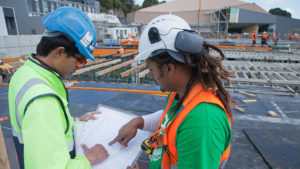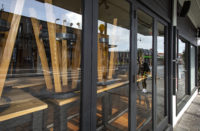
In the June 2020 quarter, the seasonally adjusted unemployment rate fell to 4 per cent, down from 4.2 per cent last quarter, while under-utilisation rose, Stats NZ said today.
In the June 2020 quarter:
- unemployment rate fell to 4.0 per cent
- under-utilisation rate rose to 12.0 per cent
- hours worked fell a record 10.3 per cent
- the number of people not in the labour force rose 37,000
- the number of employed people fell 11,000
- the wage subsidy scheme was in place from March 17, 2020
With the country in Covid-19 lockdown when the quarter began, fewer people who did not have a job were actively seeking work. People who were not actively seeking work were not counted as unemployed, resulting in a fall in the unemployment rate. However, many of these people were captured as under-utilised.
“Under-utilisation – a broader measure of spare capacity in the labour market – and hours worked provide a more detailed picture of New Zealand’s labour market than the unemployment rate alone. This quarter, under-utilisation rose from 10.4 per cent to 12 per cent – the largest quarterly rise since the series began, while hours worked were down by over 10 per cent – another record,” labour market and household statistics senior manager Sean Broughton said.
Unemployment requires active search for work
To be counted as unemployed, a person must have been actively seeking work in the last four weeks or be due to start a new job in the next four weeks. Actively seeking work means going beyond browsing job vacancies. It means the person is going beyond browsing, for example, by applying for jobs (by submitting their CV) or contacting employers.
The number of officially unemployed people varies from the number of Jobseeker Support recipients published by the Ministry of Social Development due to definitional differences.
“At the end of June, there were around 39,000 more recipients of Jobseeker Support than at the end of March, but Jobseeker Support recipients are not necessarily unemployed,” Broughton said.
“Some people who receive Jobseeker Support might work part-time and are therefore employed. Other recipients will not have work obligations. If these people are not actively seeking work or were not available to start work had a job been available, they will be counted as not in the labour force.”
Unemployment rate higher during alert level 1
The official unemployment rate of 4 per cent is an average across the 13 weeks in the June 2020 quarter. Stats NZ does not typically publish the unemployment rate for shorter periods than a quarter, such as monthly or weekly, as these measures are subject to a greater level of variability and uncertainty. However, they can help us understand quickly changing environments, such as Covid-19 alert levels.
As the quarter progressed, and New Zealand moved through Covid-19 alert levels, the unemployment rate rose. In the earlier weeks of the quarter, when the country was in alert level 4, the unemployment rate was slightly less than three per cent. Towards the end of the quarter, when alert level 1 was in place, the unemployment rate rose to nearly five percent. These rates have not been seasonally adjusted.
“During the June 2020 quarter, some people weren’t actively seeking work due to the Covid-19 lockdown. Near the end of the quarter, the unemployment rate may have increased because more people sought work as New Zealand moved down the alert levels and restrictions were eased,” Broughton said.
MP: New figures don’t reflect reality
Meanwhile National’s Finance spokesperson Paul Goldsmith said the unemployment figures released today don’t reflect “the sad reality for hundreds of thousands of New Zealanders” who have found themselves unemployed in the past months.
“The number of people receiving unemployment benefits is now up to 212,000 – an increase of 67,000 since New Zealand went into lockdown,” Goldsmith said.
“The 37,000 people who have left the labour force is a sign of the growing lack of confidence in the Government’s economic response. Added to that is the tens of thousands who want full-time work but can’t find it.
“Today’s unemployment figures don’t tell the full story of the jobs crisis we’re in as a country, and are masked by the 452,425 people on wage subsidies
“With wage subsidies set to wind down from September 1, the real cost of this economic downturn will be felt then.
“National’s BusinessStart and JobStart policies are practical, long-term solutions to the economic crisis that will help create new businesses and new jobs.
“BusinessStart will allow Kiwis who have lost their job to access up to $20,000 of their own KiwiSaver to help start a new business, while JobStart will provide a $10,000 cash payment to businesses that hire more staff.
“National’s pro-employment policies will give businesses the confidence to grow and unemployed a chance at finding work again.”
Economist: Simply unbelievable
Kiwibank chief economist Jarrod Kerr said today that at first glance, the labour market looks to have come through the Covid-19 lockdown period unscathed.
“The unemployment rate actually fell, yes that’s right fell, to 4 per cent in the second quarter. The market consensus had expected a jump to 5.5 per cent and we were expected a smaller, but still a decent lift to 5.2 per cent,” said Kerr.
“But the June quarter unemployment rate misrepresents the actual hit to the market. That’s because the lockdown threw up a few curve balls when StatsNZ collected the data. To be counted as unemployed someone must be actively seeking paid employment.
“It was impossible to actively seek anything during lockdown. Many people who would have typically been counted as unemployed were simply not counted in the labour force.”
Also softening the blow was the Government’s temporary wage subsidy, which bandaged over some of the damage, he said.
Some of the underlying measures provided a better account of what the lockdown did to the labour market. And StatsNZ attempted to adjust the unemployment rate to account for difficulty seeking work. An adjusted unemployment rate of 4.6 per cent was estimated.
The underutilisation rate – a broader measure of slack in the labour market than the unemployment rate – jumped by a record amount to 12 per cent (from 10.4 per cent). Total hours worked reported by respondents in the Household Labour Force Survey were 9.1 per cent lower than a year ago as the lockdown prevented many from being able to work.
In contrast, the Quarterly Employment Survey’s measure of total weekly paid hours fell by a more modest 3.4 per cent in the quarter. “Because many employers keep paying wages with the help of the wage subsidy,” said Kerr.
“Importantly, the June quarter does not tell us that the NZ economy has dodged a Covid-19 bullet. The labour market is expected to deteriorate further from here. The Government’s wage subsidy is due to wrap up in the coming weeks.
“At this stage there is no sign the wage subsidy will be repeated in its current form, unless NZ is forced into another period of Covid-19 lockdown. The sugar rush of post lockdown spending in recent months is likely to fade. And surveys of business confidence still show that more firms than not intend to cut headcount. We expect the unemployment rate will peak at the end of the year.
“For the Reserve Bank of NZ, they are well aware of an expected further deterioration in the labour market. The Bank will continue to keep the stimulus coming. Next week we expect the RBNZ’s to increase the cap of its LSAP (Large Scale Asset Purchases) programme as part of the August Monetary Policy Statement. Beyond that, more stimulus may be needed. And the Bank will provide an update next week on the potential further tools that may be deployed if needed.”
Government says plan to protect jobs and support businesses is working
Today’s unemployment data shows the Government’s plan to protect jobs and cushion the blow for businesses and households against the economic impact of Covid-19 was the right decision, Finance Minister Grant Robertson said.
Stats NZ said today that New Zealand’s unemployment rate in the June quarter – which includes the period the economy was in lockdown – was 4 per cent, down from 4.2 per cent in March. This compares to the Treasury’s Budget forecast for the unemployment rate to hit 8.3 per cent in June.
Robertson said the numbers showed the Government’s decision to move quickly to put the wage subsidy in place to protect jobs was the right thing to do.
“Our response has protected both lives and livelihoods. The success of the team of five million with our health response, and investments to cushion the blow for businesses and households with policies like the wage subsidy, means that New Zealand now has economic opportunities other countries do not have,” Robertson said.
New Zealand’s 4 per cent unemployment rate compares to 7.4 per cent in Australia, 11.1 per cent in the US and 12.3 per cent in Canada. The OECD average is 8.4 per cent.
“The unemployment numbers show the robustness of the economy. New Zealanders will notice in their communities that the economy is back up and running,” Robertson said.
“These numbers show that going hard and early to beat the virus works. Being able to reopen our economy sooner has saved jobs. It is proof that getting on top of the virus is the best thing we can do for our economy.
“However, we know there are still some tough times to come. The Treasury expects unemployment to rise further and peak in the September quarter as the impacts of the global recession caused by Covid-19 feed through to the domestic economy. Many countries are now experiencing second waves, which will lead to a deeper global recession.
“While the number of people in employment fell by only 0.5 per cent during the quarter and was up 1.2 per cent from a year ago, the increase in the under-utilisation rate, and number people indicating they had stopped looking for work due to Covid-19 does show the impact this global pandemic is having. That’s why we put a comprehensive economic plan in place at Budget 2020 focussed on jobs.”
As part of the economic plan announced at Budget 2020, the Government made significant investments to support New Zealanders into jobs, including:
· Free trades training to help get New Zealanders into work
· Providing businesses with up to $16,000 to help cover the costs of an apprentice’s first two years
· Boosts to He Poutama Rangatahi, Mana in Mahi, Trades Academies, Careers advice and the Maori Apprenticeships Fund
· Significant new infrastructure investment, including for 8000 new state homes and regional infrastructure projects to support the construction industry around the country
· Support for SMEs to receive up to $5000 for business advice and support to help them shift into e-commerce.



